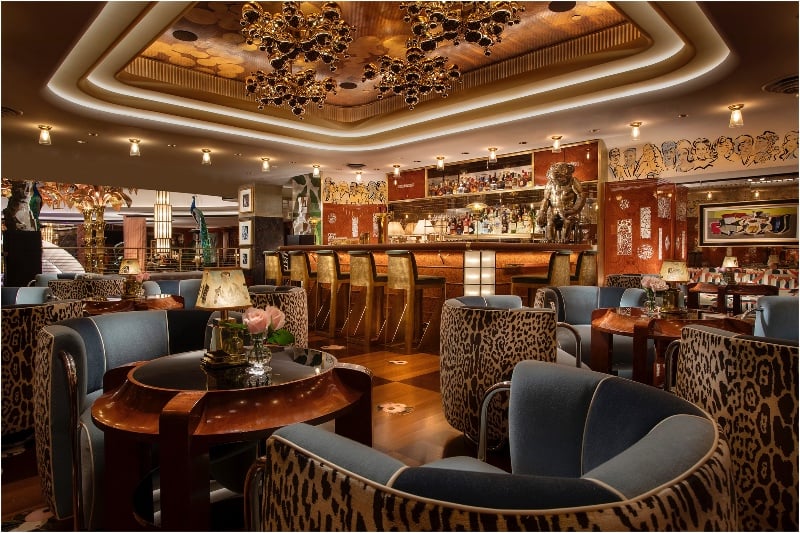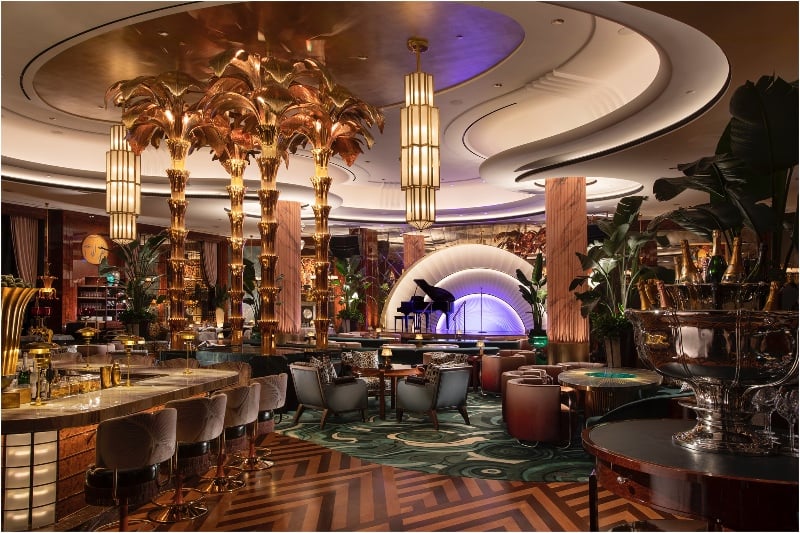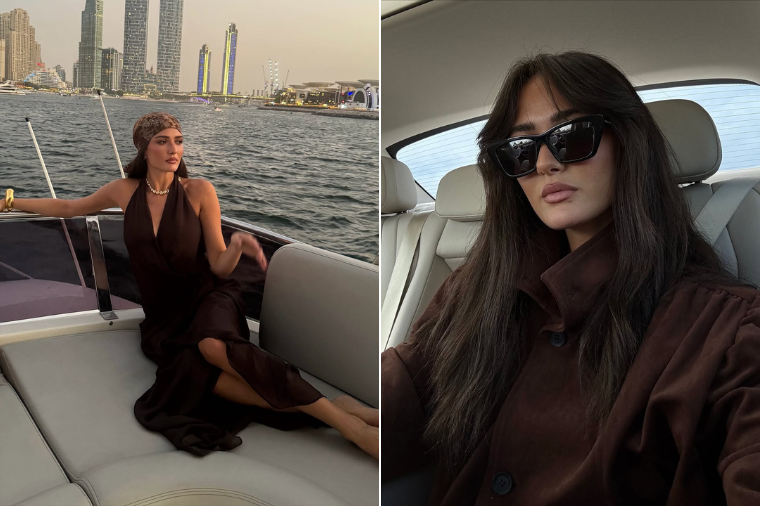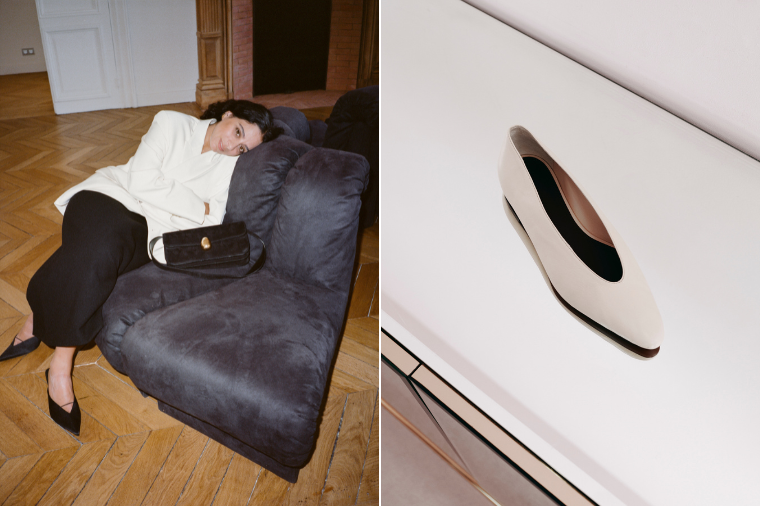In spring 2027, the curtain will rise on one of the UAE’s most ambitious hotel projects, Wynn Al Marjan Island. With 18 months to go, we talk vision, legacy and creating a modern hospitality marvel with the man behind the design mastery, Todd-Avery Lenahan
With its soothing natural light, floor-to-ceiling windows and muted palette, the Wynn Design & Development HQ on the outskirts of Las Vegas feels worlds away from the kaleidoscopically-hued, electrically energised Wynn Las Vegas hotel on the northern end of the Strip, where I’ve spent the last three days. A crimson carpet in the contemporary, near-all-white reception is perhaps the only parallel, a subtle nod to the rich hue that runs through the brand’s starry casino.
But I’m not here to deep dive into the Las Vegas legend. Instead, the spotlight is firmly on a new icon rising closer to home. On the shores of Ras Al Khaimah’s Marjan Island is Wynn’s most exciting project to date – a head-spinning integrated beach resort, with an eye-watering price tag of $5.1 billion and an opening date set for just 18 months away. A detailed model of the project sits proudly in the foyer of Wynn Design & Development, where much of the creative and design magic happens. As I stand admiring it, Todd-Avery Lenahan – Wynn Design & Development’s president and chief creative officer – arrives, greeting the congregation of new faces (a mix of journalists and recently onboarded colleagues from the Marjan Island resort) with warmth and genuine interest.
He talks passionately about the intricacies of the resort with the insider knowledge of someone who has clearly considered every corner. He teases details we’ve not heard before. Most of the 22 restaurants will gaze out over the beach – a mix of high-end, casual and social dining experiences that will be both imports from Las Vegas and creations designed exclusively for Marjan Island. Of the 1,530 guest rooms, the resort will feature Wynn’s most extensive bungalow programme to date, with four townhouses and 10 marina estates – plus a duo of royal apartments of 15,000 square feet each crowning out the resort. The UAE iteration of Las Vegas’ multimedia show, Lake of Dreams, will be called Sea of Dreams and will be six times larger in Ras Al Khaimah, a theatrical masterpiece that’s described as an atmospherically rich, animated beachfront experience. “Part of the Wynn ethos is that we’re an entertainment company,” Lenahan explains. “Entertainment is everywhere – every restaurant is highly entertaining. Our environments are made to be architecturally and visually dynamic.”

Later, we sit down one-on-one in Delilah, now confirmed as one of the first two restaurants that will form part of Wynn Al Marjan Resort’s culinary tapestry (the second will see acclaimed chef Alain Ducasse inject his signature French flair into the quintessential steakhouse experience). Former guests here read like a who’s who of the entertainment business, with Kendall Jenner, Justin Bieber and Drake among the familiar faces that have frequented Delilah’s Las Vegas outpost. It’s draped in glamour and opulence, serving as a sophisticated ode to the great supper clubs of Las Vegas in the early 20th century. Peacocks flank the grand staircase, plush banquettes are adorned in custom Hermes prints (which sadly can’t be recreated for the Ras Al Khaimah outpost, Lenahan tells us), and a roster of multi-piece bands and showgirls dripping in sparkles regularly rotate the stage. While the fictional narrative behind Delilah Las Vegas sees a former Vegas showgirl inherit a supper club, for Delilah at Wynn Al Marjan Island, the eponymous Delilah will be an entertainment icon of Beirut’s golden age, lacing the Las Vegas DNA with elements of the region.

That fusion of Wynn opulence with regional essence is the underlying current for Wynn Al Marjan Island’s design direction. “Our charge is to create something that is not at all what people anticipated,” Lenahan explains, of bringing Middle Eastern influence without leaning on design cliches. “But when they see it, they feel, ‘aha, yes this is something I haven’t seen, but it’s got a familiarity to it.’” That meant taking a unique approach to the conception of Wynn’s first Middle Eastern resort. “Our role is not to just create a beautiful place [guests] move through. Our role is to create places that move through you,” he reflects. As a result, each space is viewed as an experience, rather than just a physical environment. There’s a deliberate distillation the higher up the resort you go, with high-octane exuberance reserved for the bottom floors, where you’ll find the restaurants, gaming and shopping promenade. The aesthetic gets lighter and calmer as you progress through the tower, to the spa floor, then on to the resort rooms, something Todd-Avery describes as a design ‘exhale’.
He’s also quick to highlight legacy over trend as his reigning ethos, particularly when it comes to restaurants, referencing long-running Wynn Las Vegas eateries like 21-year-old Wing Lei, 14-year old Sinatra, and the much-lauded The Buffet, now in its 20th year. “We create things that have legacy, that have roots, that have tenure. As I sit and draw them, I have in my mind that they all need to have a landmark quality to them, the day they open.” So for Wynn Al Marjan, that means innovation, but not experimentation.
We continue to discuss innovation and evolution, and while Lenahan has designed ‘over a dozen’ beachfront properties around the world, this will be his first beachfront resort for Wynn. “In many ways, it really was a blank canvas,” he says. “It was a canvas of a certain dimension, but we were allowed to paint freely on it – so that’s been a wonderful process.” One of the first – and more defining – moves was reorienting the resort from the original masterplan, something that Todd-Avery tells me occurred ‘about 17 seconds’ after he arrived on site for the first time. “It was the right move,” he affirms. “[That] resort would have been radically different from what you have today.”

While many parts will be analogous to Wynn Las Vegas, one feature that is exclusive to Wynn Al Marjan Island is Enclave (pictured above), a hotel-within-a-hotel set on the resort’s top floors, promising to set a new hallmark for luxury. A collection of 313 elegant rooms range from entry-level suites to the sumptuous royal apartments, and Enclave guests will also benefit from a private entrance, their own exclusive pool and beach, plus a dedicated restaurant above the grand lobby helmed by a yet-to-be-revealed renowned restaurateur making their UAE debut. “We were so committed to honouring the consumer expectation in this region that we said that we’ve got to go to a new level,” Lenahan tells Emirates Man on the reason behind creating Enclave. “The discerning traveller craves independent addresses with great personality and that give them a sense of propriety. They like to arrive and feel like this is their hotel. I get the same room, they know what I like to drink, and the concierge knows me. And we can offer that on the scale of Enclave.”
So, after more than 25 years as a pioneering thought leader in hospitality design, how does Lenahan keep the creative juices flowing? “You have to stay constantly curious,” he says. “I don’t look at books, I don’t look at magazines, I don’t look at what my peers are doing in the industry, because it imprints on you images and ideas that can actually short-circuit your ability to think freely.” Instead, he explains, the way he brings each concept and space to life is through ‘a lot of dreaming on behalf of our customers.’ “I source from life, from experience. It doesn’t always happen in the studio. Our job is to create something that is really a new view of something people thought they already knew all about. And when we show it to them, they go, this is a dimension of this particular culture, this particular flavour, this particular type of dining that I’ve never experienced before.”














